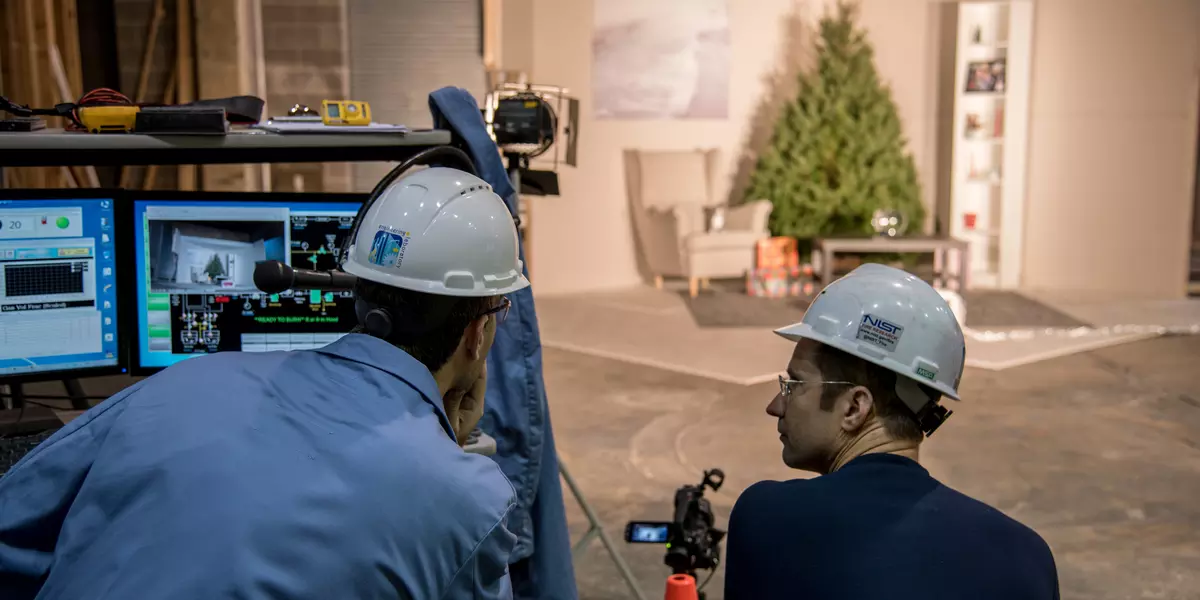
Bundy (left) and research structural engineer Matthew Hoehler (right) look closely to see signs of fire in the watered tree. As expected, the fire set in the well-watered tree didn’t catch.
Behind the Scenes: The Making of a NIST Holiday Special
Every holiday season, hundreds of residential fires start with a Christmas tree. You may have seen NIST’s video that illustrates the dramatic difference between a fire started in a well-watered tree versus in a thirsty, neglected tree. Here, you can get a behind-the-scenes glimpse of the video shoot.
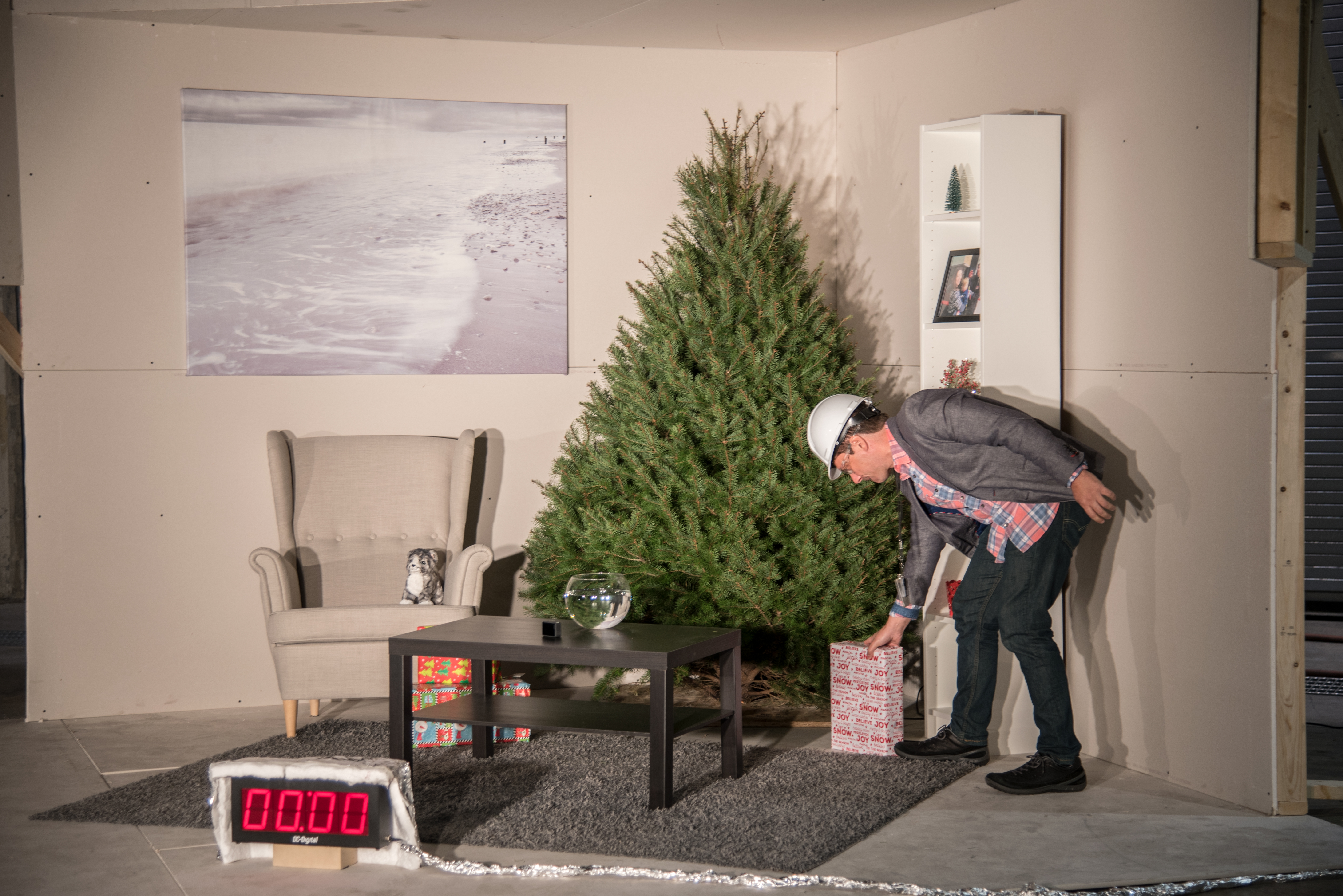
Leon Gerskovic, NIST video director, positions a prop present on the set. Two sets of furniture, decorations and trees were purchased, just in case. In the end, only one set was used.
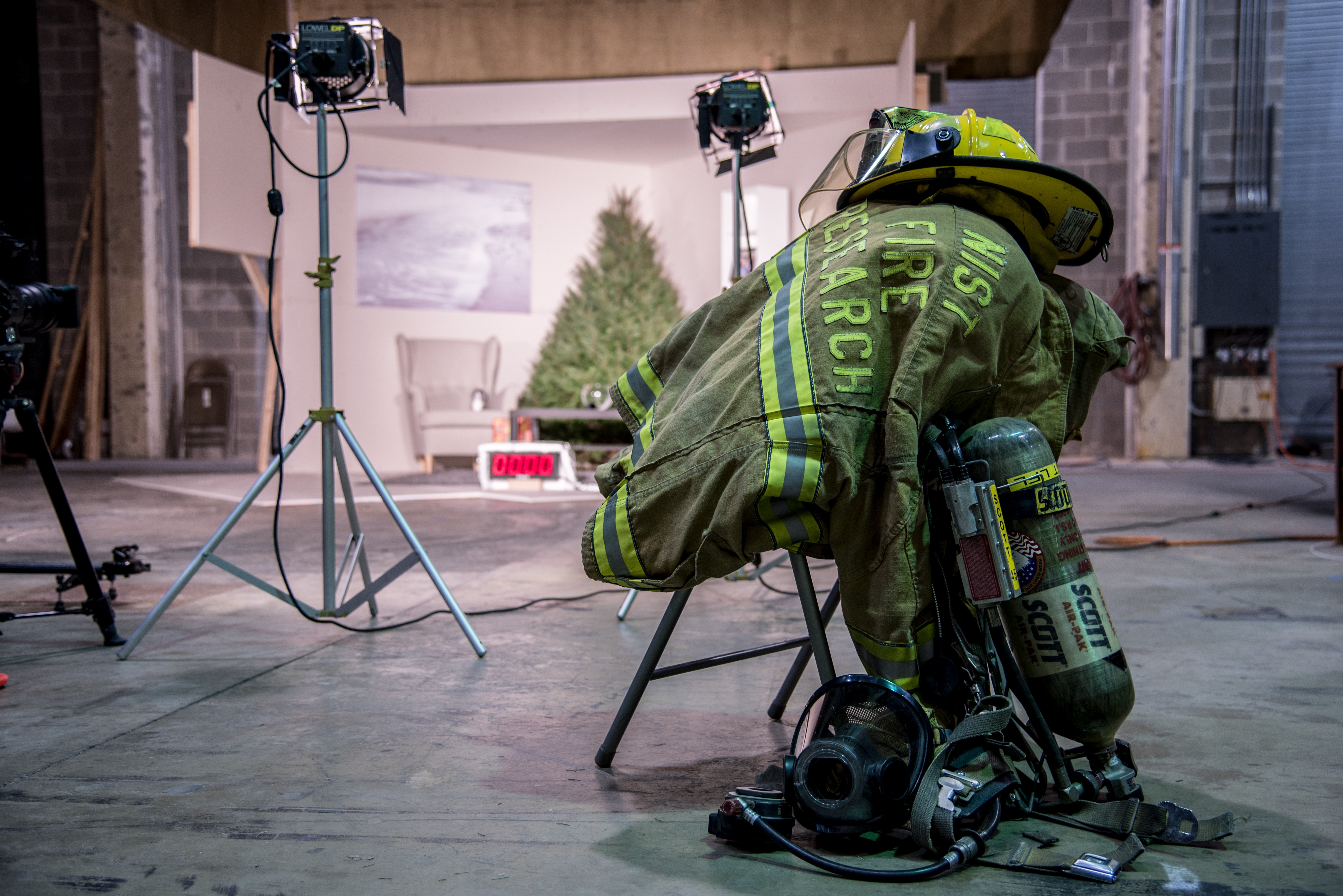
NIST fire research gear at the ready.
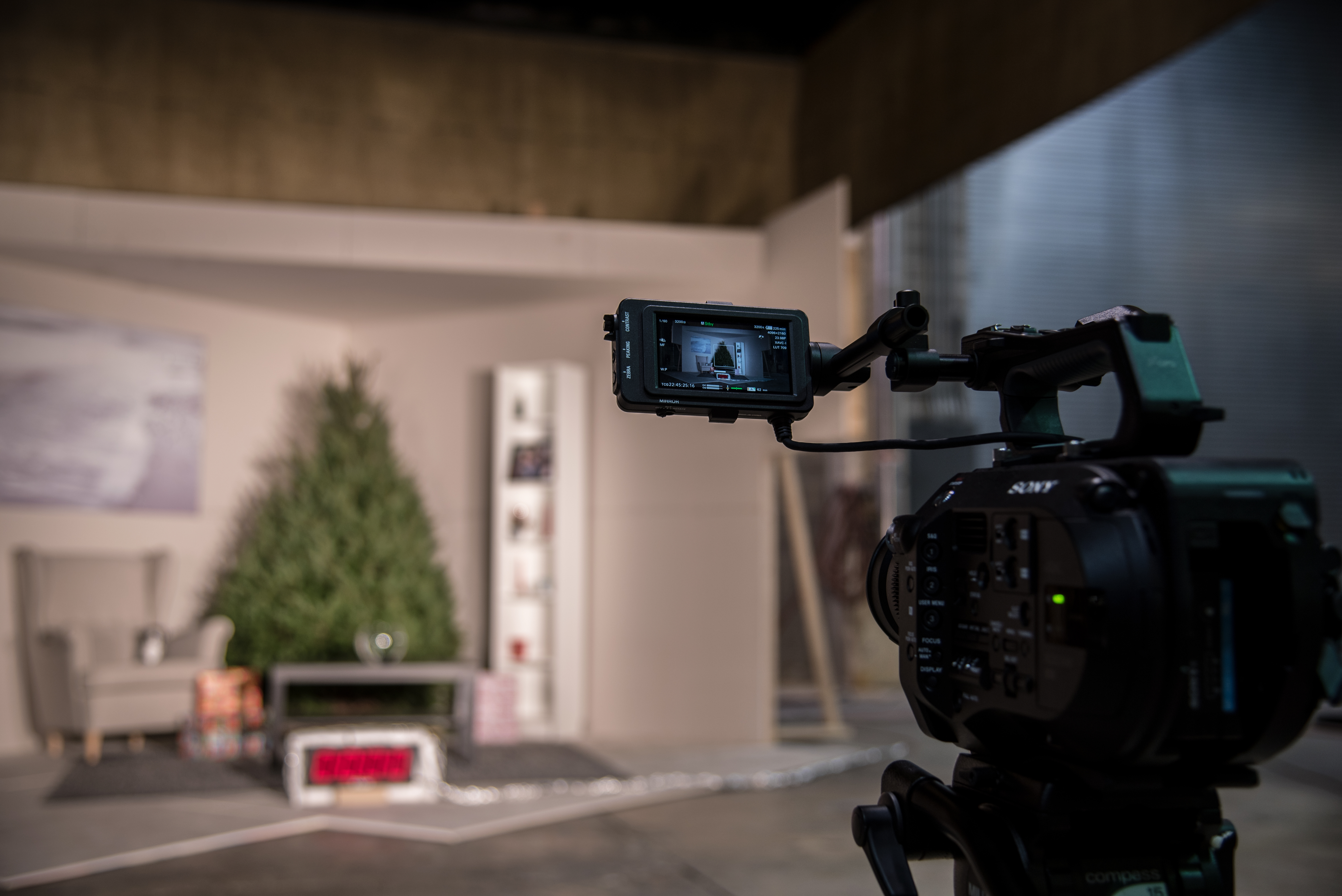
Both trees were Douglas firs. The watered tree had been lovingly hydrated since its purchase five weeks earlier, while the unwatered tree didn’t get a drop in that same time.

Director of NIST’s National Fire Research Lab Matt Bundy at the controls. Though the purpose of this burn was primarily to make an informational video, various kinds of data were also collected throughout both burns.
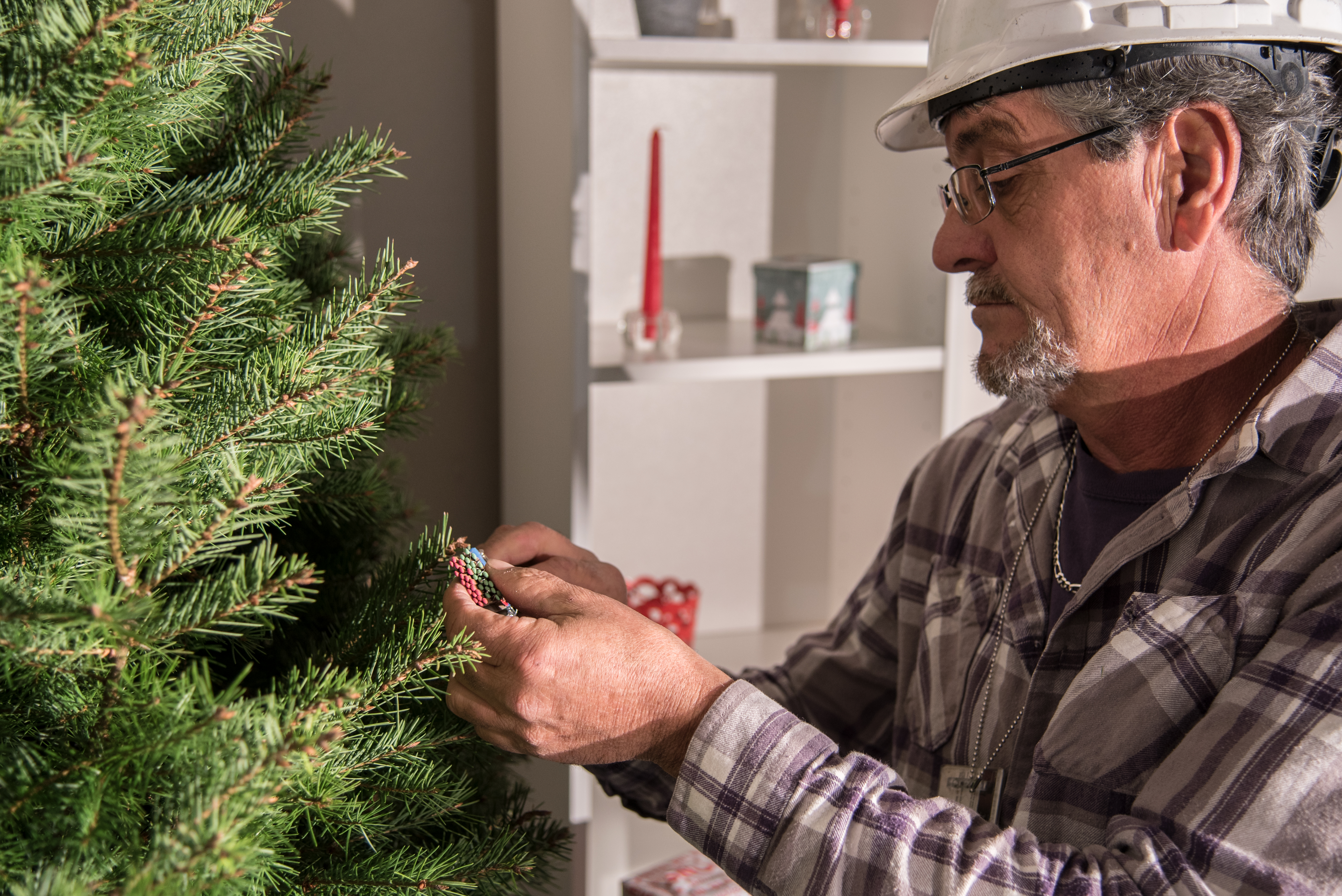
Engineering technician Laurean DeLauter places the ignition source in the watered tree. NIST fire researchers used a book of matches to ignite both fires. This might represent ignition from an electric short from holiday lighting or a candle too close to the tree.
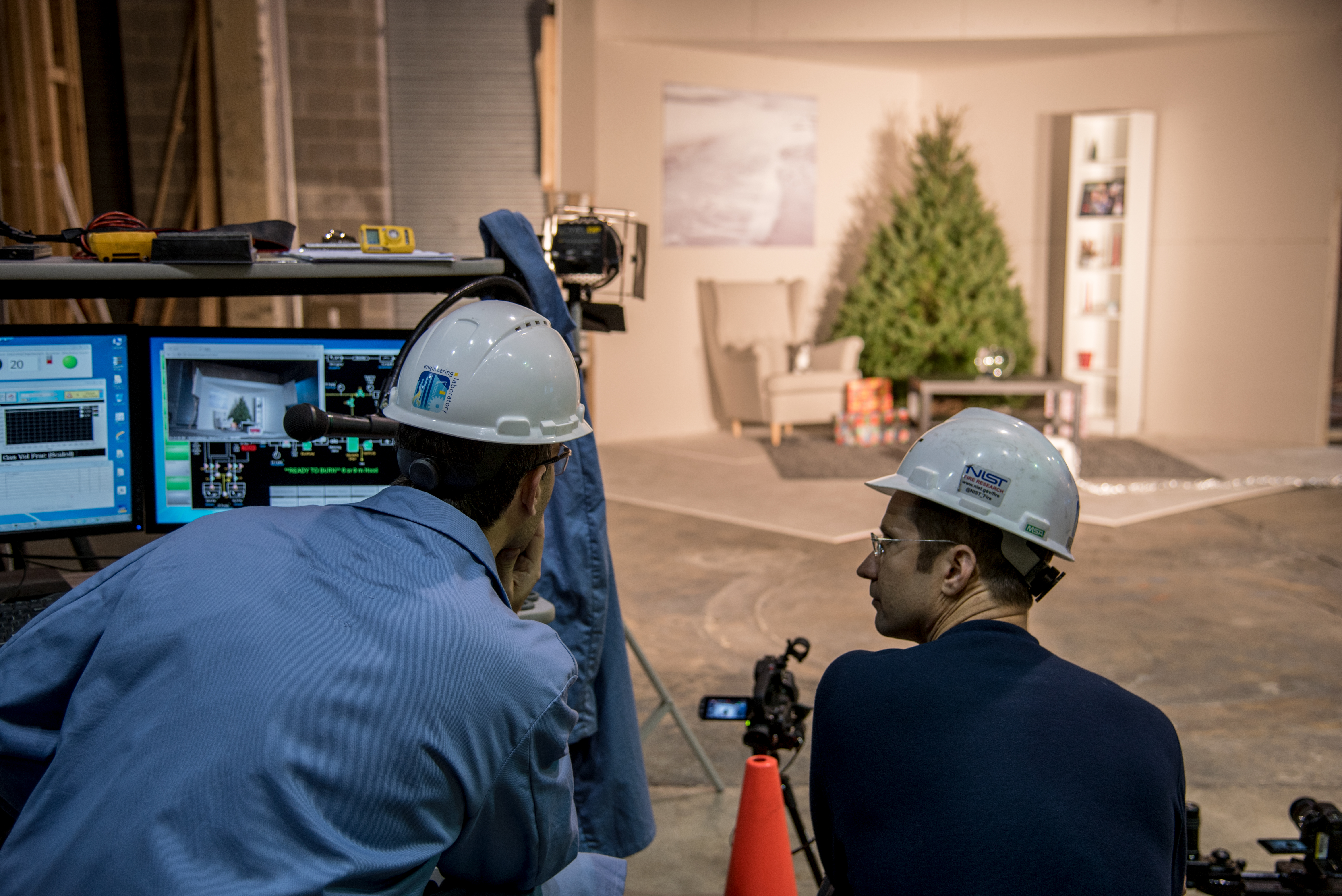
Bundy (left) and research structural engineer Matthew Hoehler (right) look closely to see signs of fire in the watered tree. As expected, the fire set in the well-watered tree didn’t catch.
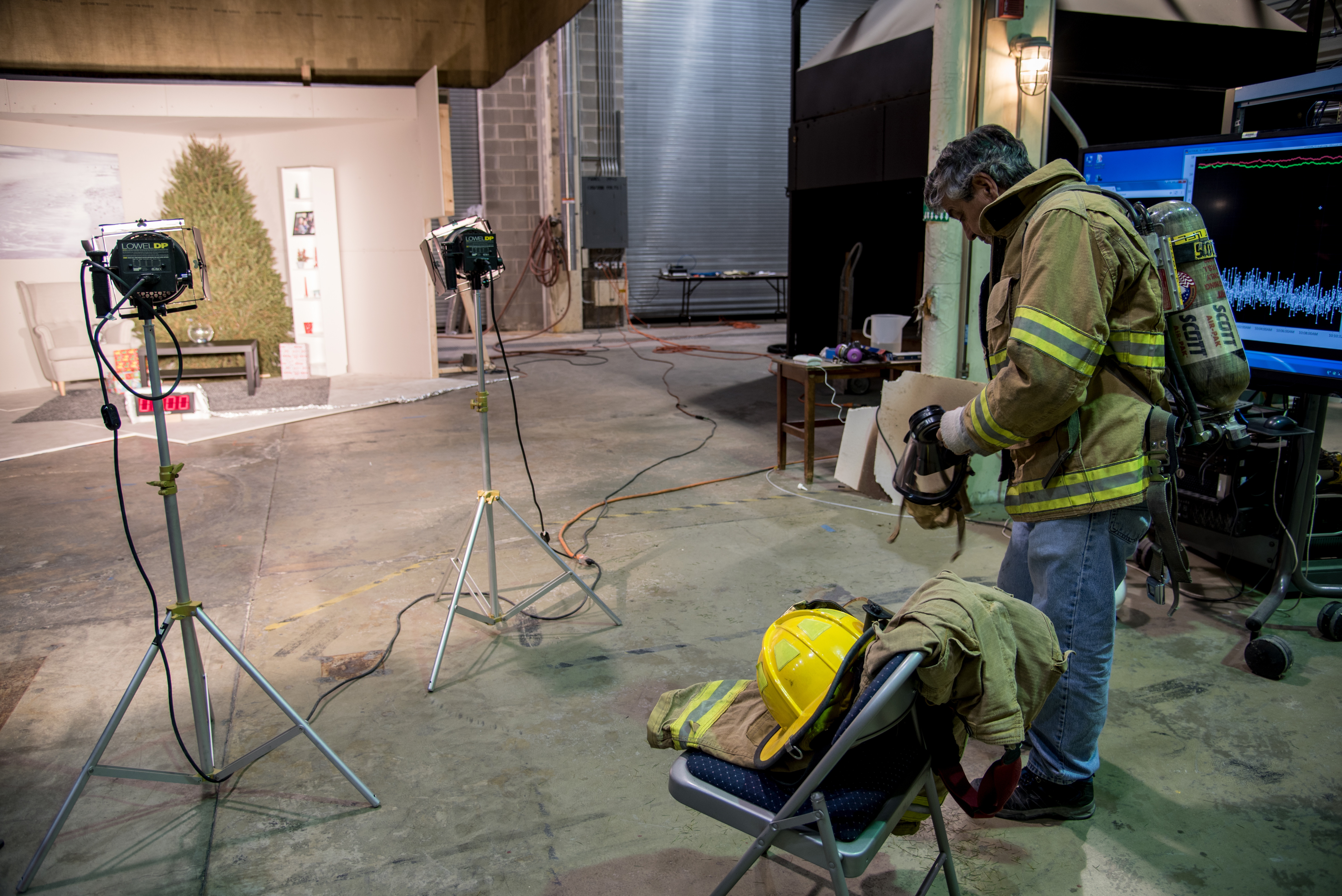
Anticipating a more substantial conflagration, DeLauter gears up for the main event: the burn of the unwatered tree.
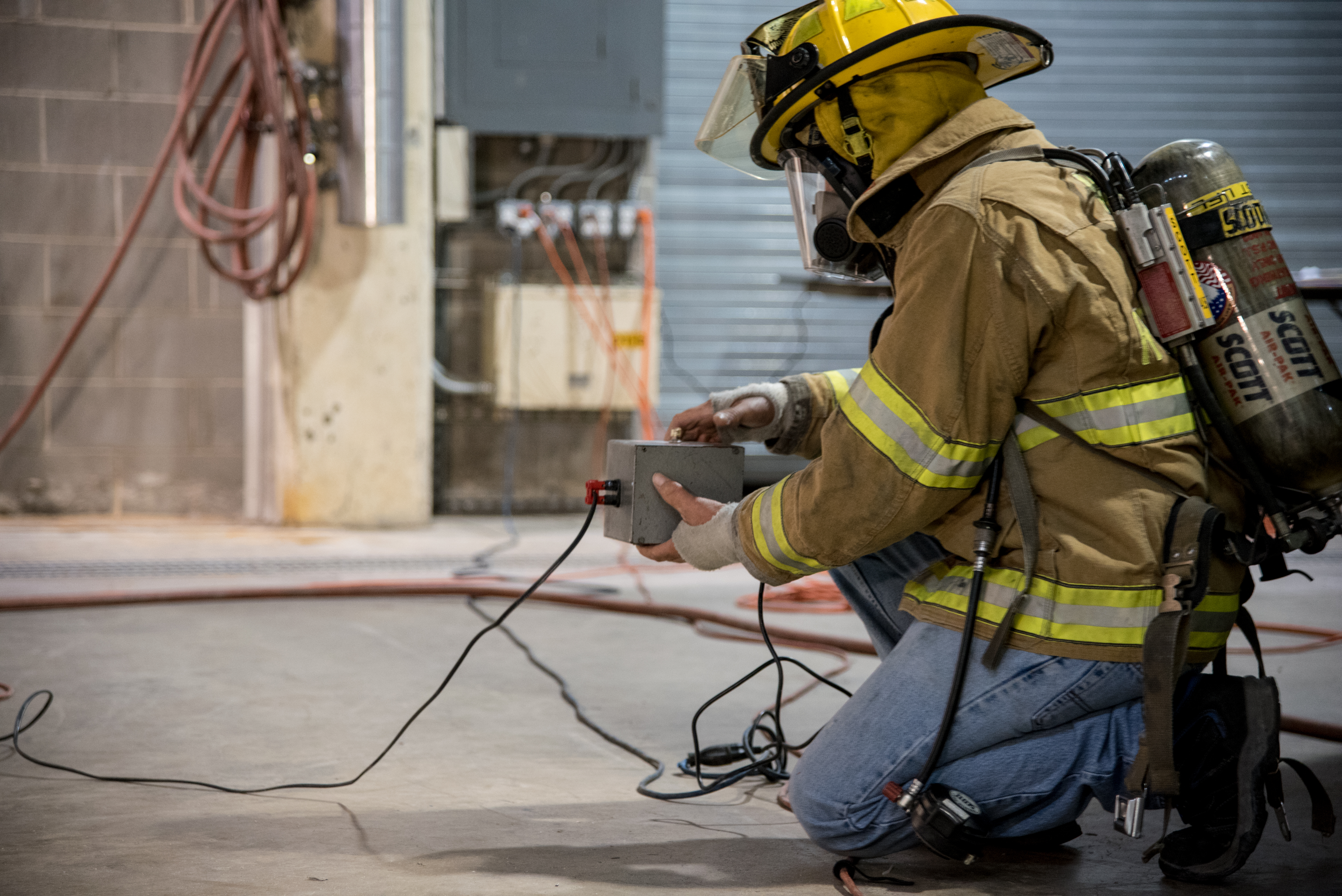
DeLauter ignites the unwatered tree.
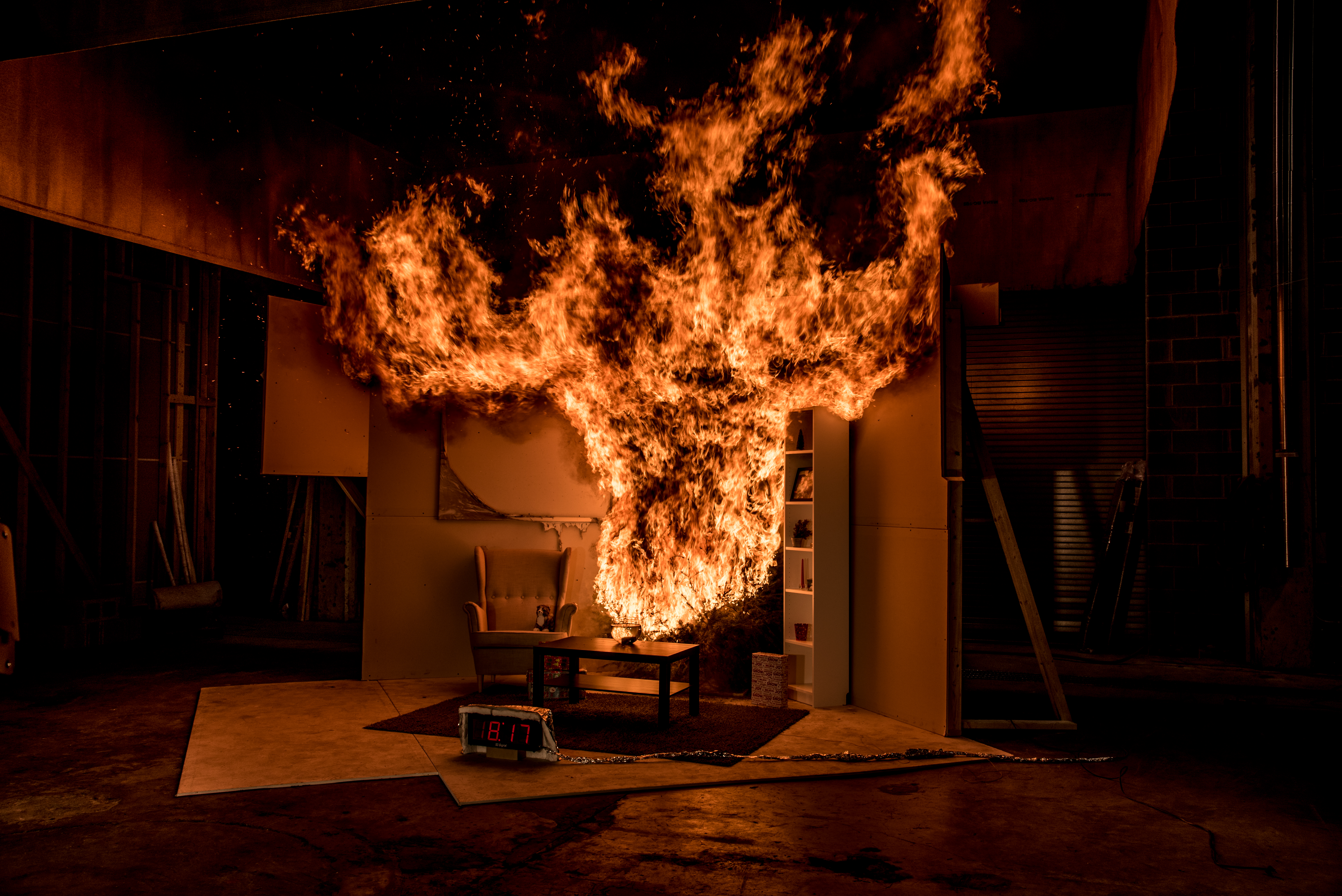
The fire in the unwatered tree grew rapidly, becoming extremely hazardous in less than 10 seconds and quickly spreading to the adjacent furniture. Inside the National Fire Research Lab, a large hood contained the climbing flames. If the fire occurred in a space the size of a typical living room, the smoke layer at the ceiling would most likely grow rapidly, leading to flashover—the near-simultaneous ignition of most of the directly exposed combustible material.
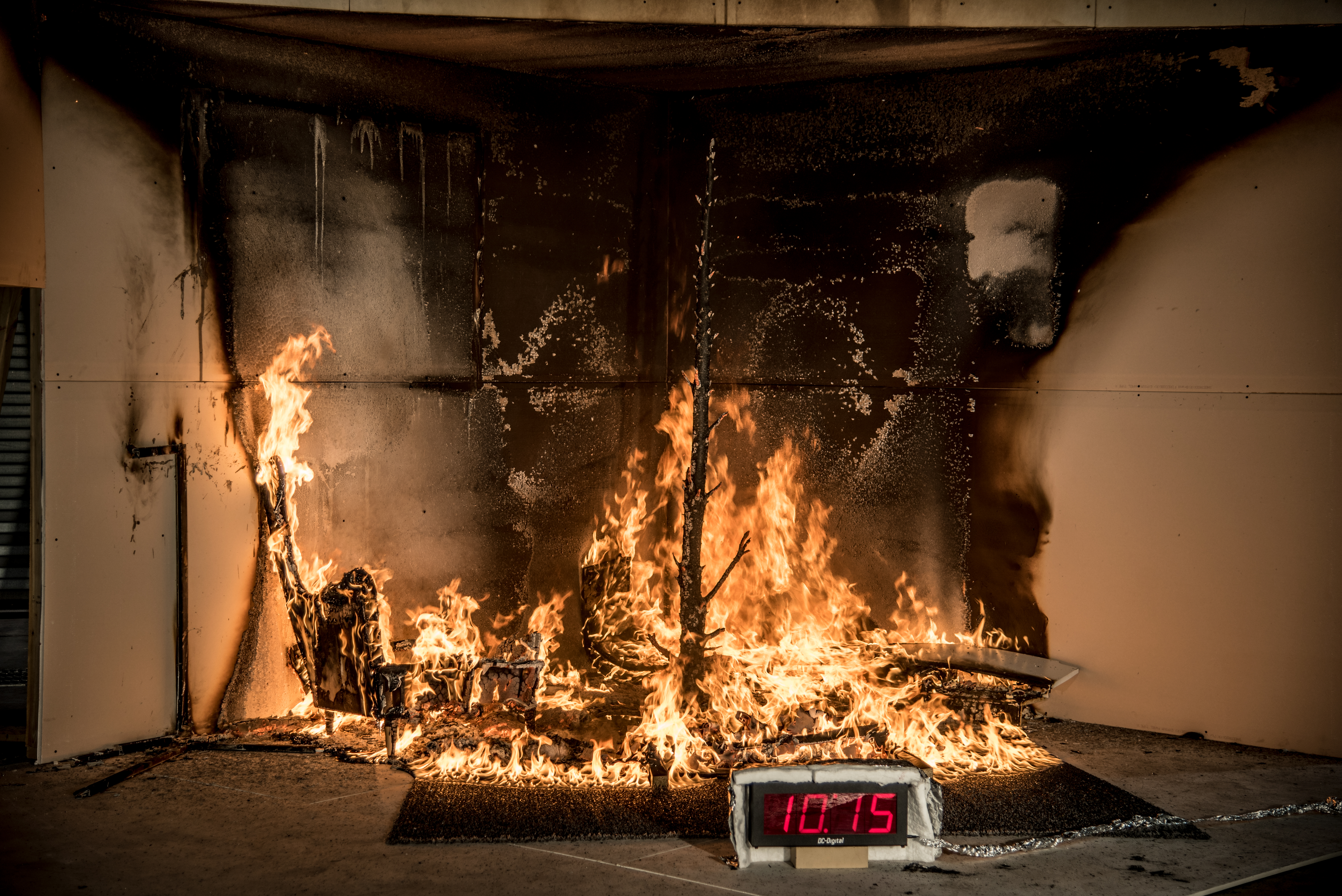
A fire in an unwatered tree grows quite quickly. The fire reached its full size after about 20 seconds and most of the tree needles were consumed by the fire within 40 seconds. In just 10 minutes, the entire contents of our set were devoured.
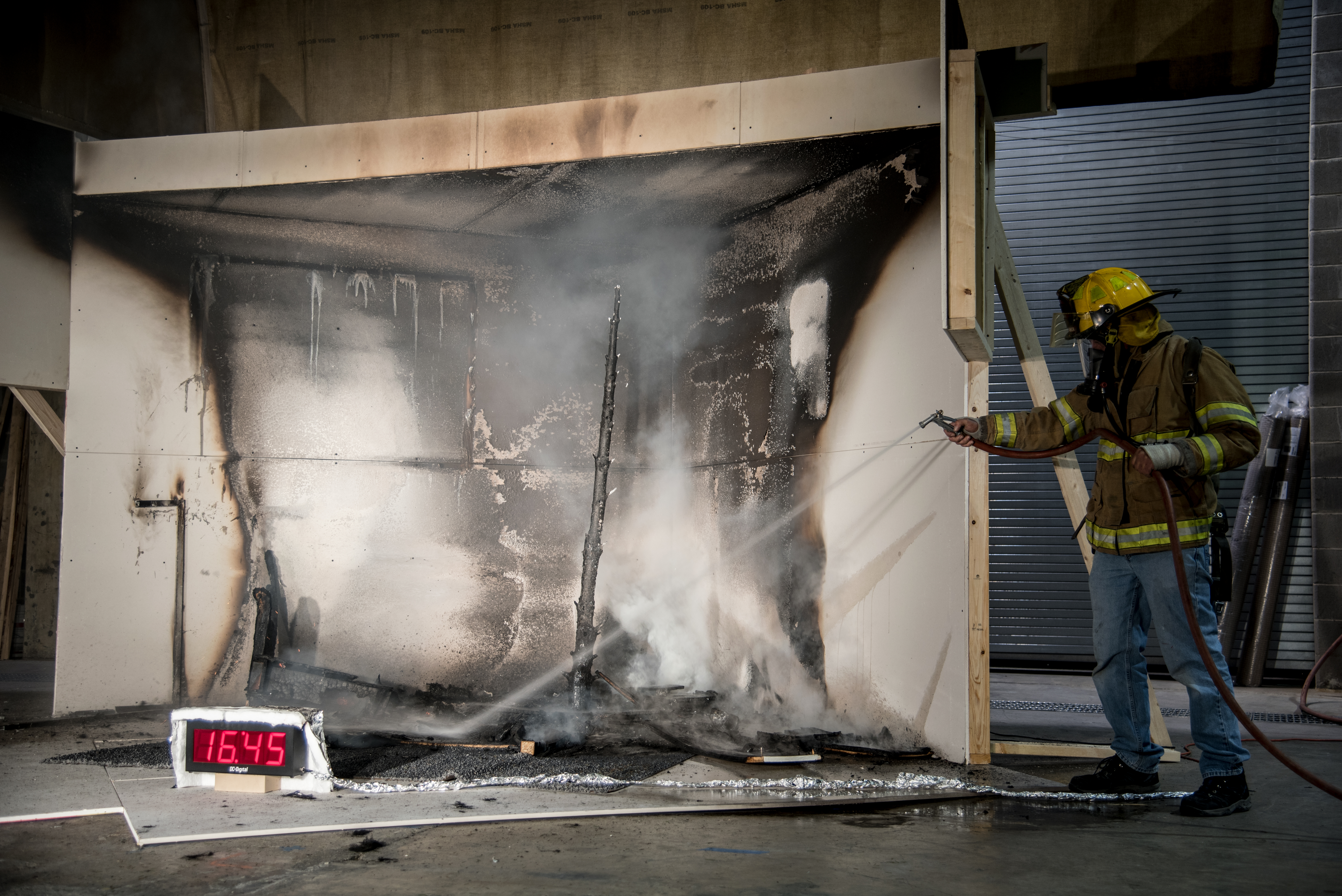
DeLauter puts out the fire.

